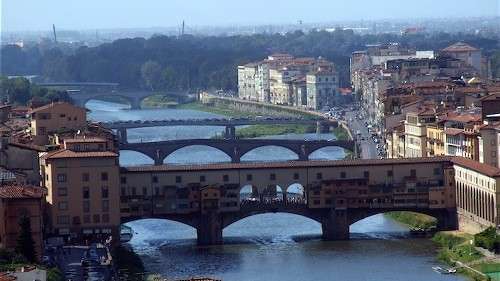San Gimignano • Italy
San Gimignano is a small walled medieval city in Tuscany, Italy, famous for its towers which may be seen from several kilometres outside the town, declared a World Heritage Site by UNESCO.
Founded as a small village in the 3rd century BC by the Etruscans. In the Middle Ages and Renaissance era, it was a stopping point for Catholic pilgrims on their way to Rome and the Vatican. The city’s development also was improved by the trade of agricultural products from the fertile neighbouring hills.
In 1199, during the period of its highest splendour, the city made itself independent from the bishops of Volterra. Saint Fina, known also as Seraphina and Serafina, was a 13th-century Italian saint born in San Gimignano during 1238. Since Saint Fina died on March 12, 1253, her feast day became March 12. Her major shrine is in San Gimignano and the house said to be her home still stands in the town.
The city flourished until 1348, when the Black Death that affected all of Europe, compelled it to submit to Florence. San Gimignano became a secondary centre until the 19th century when its status as a touristic and artistic resort began to be recognised.
While in other cities, such as Bologna or Florence, most or all of their towers have been brought down due to wars, catastrophes, or urban renewal, San Gimignano has managed to conserve fourteen towers of varying height which have become its international symbol.
There are many churches in the town: the two main ones are the Collegiata, formerly a cathedral, and Sant’Agostino, housing a wide representation of artworks from some of the main Italian renaissance artists. The Communal Palace, is currently home of the town gallery, with works by Pinturicchio, Benozzo Gozzoli, Filippino Lippi, Domenico di Michelino, Pier Francesco Fiorentino and others. From Dante’s Hall in the palace, access may be made to a Majesty fresco by Lippo Memmi, as well as the Torre del Podest or Torre Grossa, 1311, which stands fifty-four metres high.
The heart of the town contains the four squares, the Piazza Della Cisterna, the Piazza Duomo where the Collegiata is located, the Piazza Pecori and the Piazza Delle Erbe.






